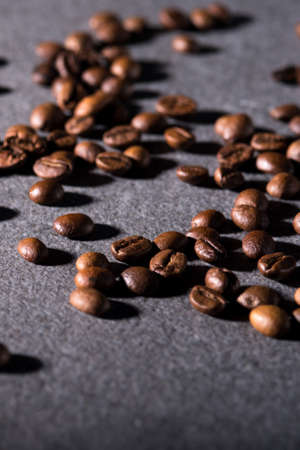1. Current Trends in the U.S. Gourmet Coffee Market
Changing Consumer Preferences
Americans are becoming more particular about their coffee choices. Many consumers now look for unique flavors, single-origin beans, and specialty roasts that go beyond the basic cup of joe. Younger generations, especially Millennials and Gen Z, are driving this shift by seeking out new taste experiences and sharing their finds on social media. People want to know where their coffee comes from and how it was produced, leading to greater interest in transparency and storytelling from brands.
Sustainability Movements
Sustainability is a big deal in the gourmet coffee scene. Buyers are paying close attention to how beans are sourced. Ethical practices like fair trade certification, direct trade relationships with farmers, and eco-friendly packaging are now important selling points for premium coffee brands. Here’s a quick comparison of what many customers look for:
| Feature | Why It Matters |
|---|---|
| Fair Trade Certified | Ensures farmers get a fair price and better working conditions |
| Organic Certification | No synthetic pesticides or fertilizers used during farming |
| Eco-Friendly Packaging | Reduces environmental impact with compostable or recyclable materials |
| Direct Trade Sourcing | Coffee companies build long-term partnerships with growers for quality and transparency |
The Influence of American Coffee Culture
The U.S. has a rich coffee culture that shapes what people expect from gourmet beans. From the rise of third-wave coffee shops to home brewing trends like pour-over and cold brew, Americans love experimenting with new methods and flavors. This adventurous spirit fuels demand for limited-edition releases, seasonal blends, and collaborations between local roasters and cafes. American consumers also enjoy supporting small businesses, which has boosted the popularity of indie coffee brands across the country.
2. Top Gourmet Coffee Bean Brands in the U.S.
When it comes to gourmet coffee beans, the U.S. market is bursting with innovation and flavor. From established names to exciting newcomers, American coffee brands are constantly raising the bar for quality and taste. Lets take a look at some of the standout players making waves in this competitive scene—and what sets them apart.
Well-Known Gourmet Coffee Brands
| Brand | Founded | Known For | Unique Qualities |
|---|---|---|---|
| Stumptown Coffee Roasters | 1999 (Portland, OR) | Smooth blends, direct trade | Pioneers in cold brew; transparent sourcing practices |
| Blue Bottle Coffee | 2002 (Oakland, CA) | Single-origin beans, freshness | Coffee roasted to order; minimalist style cafes |
| Intelligentsia Coffee | 1995 (Chicago, IL) | Direct trade relationships | Focus on education and sustainability; seasonal offerings |
| Counter Culture Coffee | 1995 (Durham, NC) | Sustainable sourcing | Emphasis on training and transparency; eco-friendly packaging |
| Peet’s Coffee | 1966 (Berkeley, CA) | Dark roasts, classic blends | A West Coast staple; consistent quality across decades |
Emerging U.S.-Based Gourmet Brands to Watch
- Onyx Coffee Lab (Arkansas): Award-winning roaster known for creative blends and an emphasis on traceability from farm to cup.
- Verve Coffee Roasters (California): Pushing boundaries with unique single origins and sustainable farming partnerships.
- Luminosa Coffee (Texas): A newer brand focusing on ethically sourced beans and small-batch roasting for a fresher experience.
- Sey Coffee (New York): Pioneering light roasts that highlight subtle flavors and terroir of each region.
- Sightglass Coffee (California): A family-owned business committed to transparency and hand-crafted roasting methods.
What Sets These Brands Apart?
The best gourmet coffee brands in the U.S. share a few things in common: dedication to quality, close relationships with farmers, innovative roasting techniques, and a willingness to experiment with new flavors. What really makes them stand out is their commitment to transparency—many offer detailed information about where their beans come from and how they’re processed. Whether you prefer bold dark roasts or delicate single origins, these brands provide something special for every coffee lover.

3. Sourcing and Roasting: What Makes Coffee Beans Gourmet
When it comes to gourmet coffee beans in the U.S. market, not all beans are created equal. The “gourmet” label isn’t just about flavor—it’s about quality at every step, from where the beans are grown to how they’re processed and roasted. Let’s break down the key factors that make certain coffee beans stand out as truly gourmet.
Origin: The Coffee’s Birthplace Matters
The origin of coffee beans plays a huge role in their flavor profile and overall quality. Gourmet coffee brands often source their beans from renowned coffee-growing regions known for unique flavors and high standards. Here’s a look at some popular origins:
| Region | Flavor Notes | Why Its Special |
|---|---|---|
| Ethiopia | Fruity, floral, wine-like | Birthplace of coffee, diverse microclimates |
| Colombia | Nutty, chocolatey, balanced acidity | Ideal altitude and climate for growing Arabica beans |
| Guatemala | Spicy, complex, full-bodied | Volcanic soil adds depth to flavor |
| Sumatra (Indonesia) | Earthy, herbal, low acidity | Unique wet-hulling process creates distinct taste |
| Kona (Hawaii) | Smooth, sweet, light-bodied | Grown on volcanic slopes with meticulous hand-picking |
Processing Methods: How Beans Are Treated After Harvesting
The way coffee cherries are processed after picking affects everything from body to aroma. Gourmet coffees often highlight special processing methods:
| Method | Description | Taste Impact |
|---|---|---|
| Washed (Wet) | Pulp is removed before beans dry; clean water used in process. | Crisp, bright flavors with clear acidity. |
| Natural (Dry) | Coffee cherries dried with fruit intact; no washing involved. | Sweeter, fruitier notes; heavier body. |
| Honey Processed | Pulp partially removed; some mucilage left on bean during drying. | Mellow sweetness with syrupy mouthfeel. |
| Anaerobic Fermentation | Beans fermented in oxygen-free tanks for enhanced complexity. | Bolder flavors; funky or wine-like nuances. |
Roasting Techniques: Bringing Out the Best in Each Bean
The roasting process transforms green coffee beans into the aromatic brown beans we know and love. Gourmet roasters in the U.S. pay close attention to roast profiles to highlight each bean’s unique qualities:
- Small-Batch Roasting: Many gourmet brands roast in small batches for greater control over temperature and timing, ensuring consistency and freshness.
- Light to Medium Roasts: These roasts preserve more of the bean’s original flavors—think fruity or floral notes—compared to traditional dark roasts.
- Sustainable Practices: Top-tier roasters may use energy-efficient equipment or prioritize direct-trade relationships to support farmers and communities.
- Date Stamping: Gourmet brands often include the roast date on packaging so you know you’re getting fresh coffee.
Sourcing & Roasting: Key Takeaways for U.S. Coffee Lovers
- The best gourmet coffees start with high-quality beans from reputable regions.
- Unique processing methods add character and depth to each cup.
- Careful roasting brings out the best in every batch—look for details on origin and roast style when shopping for gourmet beans in the U.S. market!
4. How to Choose the Best Gourmet Coffee Beans
Understanding Flavor Profiles
When shopping for gourmet coffee beans in the U.S., one of the most exciting things is exploring different flavor profiles. Coffee flavors can range from fruity and floral to nutty, chocolatey, or even spicy. These flavors come from the beans origin, variety, and how it’s processed. For example, Ethiopian coffees often have bright, citrusy notes, while beans from Sumatra might taste earthy and rich. If you like your coffee sweet and vibrant, look for tasting notes like “berry,” “citrus,” or “floral” on the label. Prefer something smooth and comforting? Try beans described as “chocolatey,” “nutty,” or “caramel.”
Roast Levels Explained
The roast level has a big impact on your coffee’s taste. Here’s a quick overview:
| Roast Level | Taste Description | Best For |
|---|---|---|
| Light Roast | Bright acidity, complex flavors, preserves origin character | Pourover, Chemex, Aeropress |
| Medium Roast | Balanced acidity and body, rounded flavors | Drip coffee makers, French press |
| Dark Roast | Bolder, smoky flavors, less acidity | Espresso machines, cold brew |
Freshness Matters
Coffee tastes best when it’s fresh. Always check the roast date on the bag—not just an expiration date! Most specialty coffee shops in the U.S. list when the beans were roasted. Try to buy beans roasted within the last two to four weeks for peak flavor.
Certifications to Look For
If you care about sustainability or ethical sourcing, keep an eye out for certifications on the packaging:
- USDA Organic: Grown without synthetic pesticides or fertilizers.
- Fair Trade Certified: Ensures fair wages and ethical practices for farmers.
- Rainforest Alliance: Promotes environmental responsibility and farmer well-being.
- Specialty Coffee Association (SCA) Score: Indicates high-quality beans (usually scored 80+).
Practical Tips for Shopping Gourmet Coffee Beans
- Buy Whole Bean: Grind just before brewing for maximum freshness.
- Select Local Roasters: Support small businesses and get fresher beans.
- Ask Questions: Don’t hesitate to ask baristas about their favorite picks or what’s fresh right now.
- Avoid Large Bulk Bins: Beans in open-air bins can go stale quickly—opt for sealed bags instead.
- Taste Test: Many specialty shops offer sample cups or pour-overs so you can try before you buy.
5. Where to Buy: Navigating the U.S. Coffee Scene
Finding gourmet coffee beans in the U.S. is easier than ever, thanks to a thriving coffee culture and many purchasing options. Whether you’re just starting your coffee journey or are a seasoned aficionado, understanding where to buy can help you access the freshest, highest-quality beans available.
Popular Channels for Gourmet Coffee Beans
| Channel | What Makes It Special | How to Access |
|---|---|---|
| Local Roasters | Freshly roasted beans, unique small-batch flavors, direct relationships with farmers | Visit in person, order directly from their websites |
| Specialty Cafes | Curated selections, expert baristas, often sell beans from top roasters | Check local specialty coffee shops or chains like Blue Bottle and Stumptown |
| Online Retailers | Wide variety of brands, subscription options, convenient delivery to your door | Websites like Trade Coffee, Amazon, Atlas Coffee Club, and more |
| Farmers Markets & Food Co-ops | Support local businesses, discover regional roasters and seasonal offerings | Visit weekend markets or co-op grocery stores in your area |
| National Grocery Chains | Easy access, some carry premium and organic brands alongside mass-market options | Kroger, Whole Foods, Safeway, etc. |
Tips for Buying High-Quality Beans Nationwide
- Check Roast Dates: Always look for freshly roasted beans; avoid products without a clear roast date.
- Look for Origin Info: Quality brands will share details about the farm or region where the beans are grown.
- Try Subscriptions: Many online retailers offer curated subscriptions that match your taste preferences and deliver fresh beans regularly.
- Ask for Recommendations: Don’t hesitate to ask baristas or staff at specialty cafes and local roasters—they love sharing their favorites!
- Taste Test: Experiment with different origins and roast levels to find what suits your palate best.
Coffee Culture Across America
The U.S. coffee scene is incredibly diverse—West Coast cities like Seattle and Portland are known for innovative third-wave cafes, while New York and Chicago boast a mix of historic roasters and trendy newcomers. No matter where you live, there’s likely a community of passionate coffee lovers nearby eager to help you explore new flavors and brewing methods.


